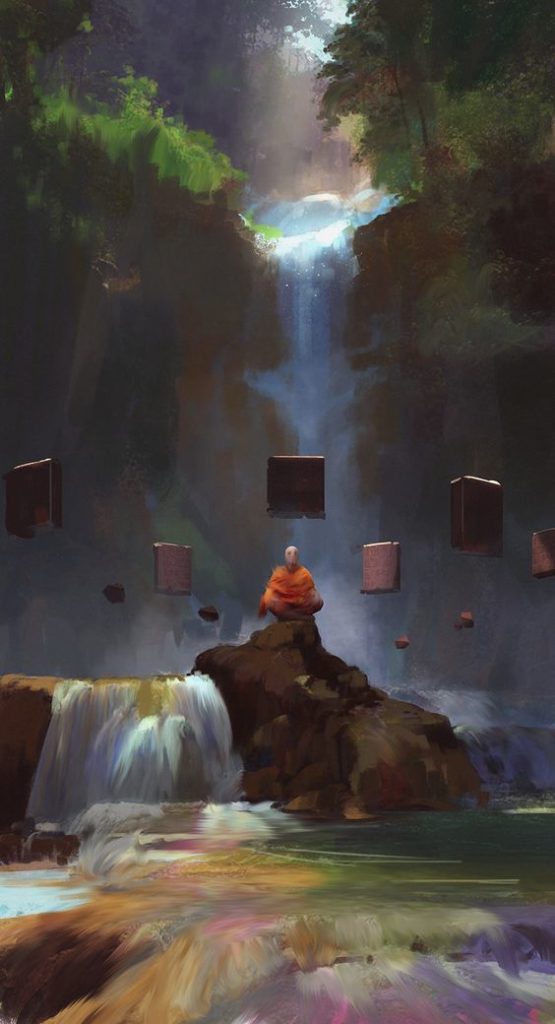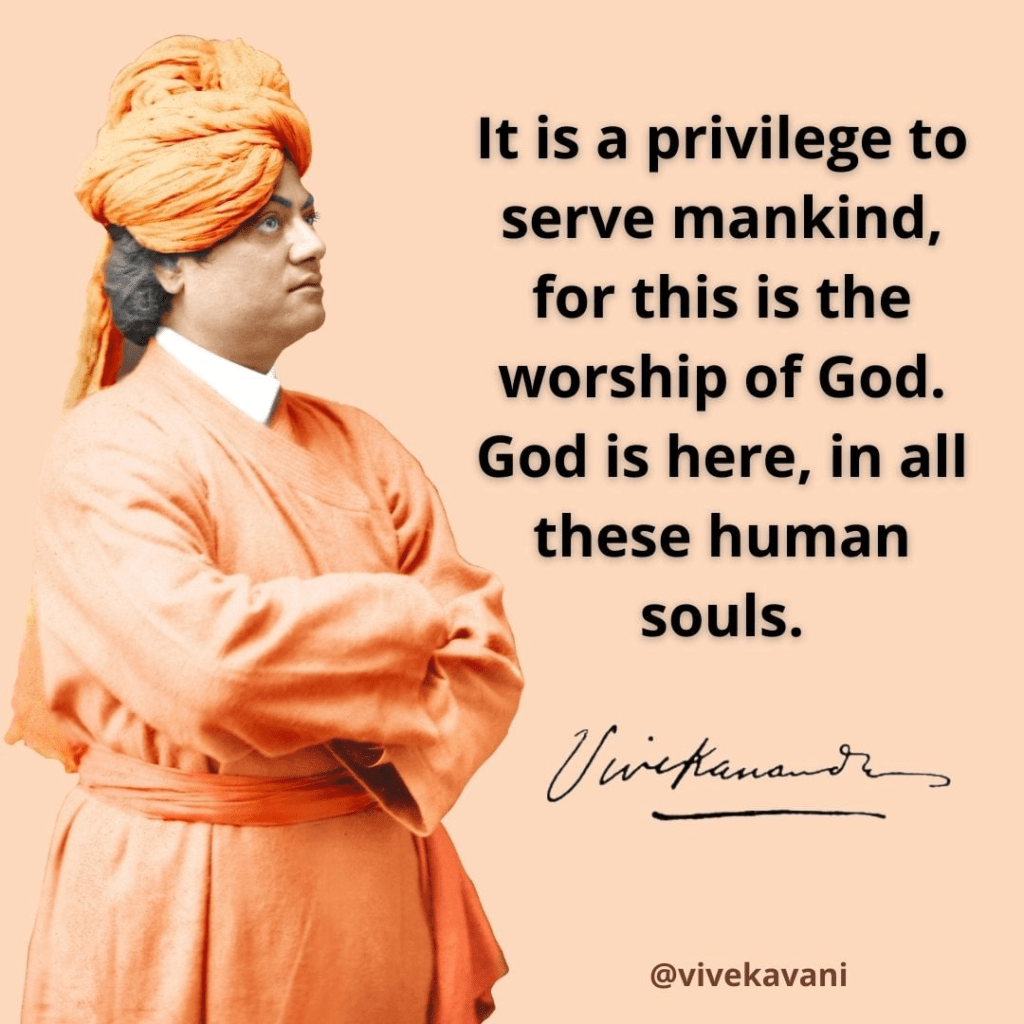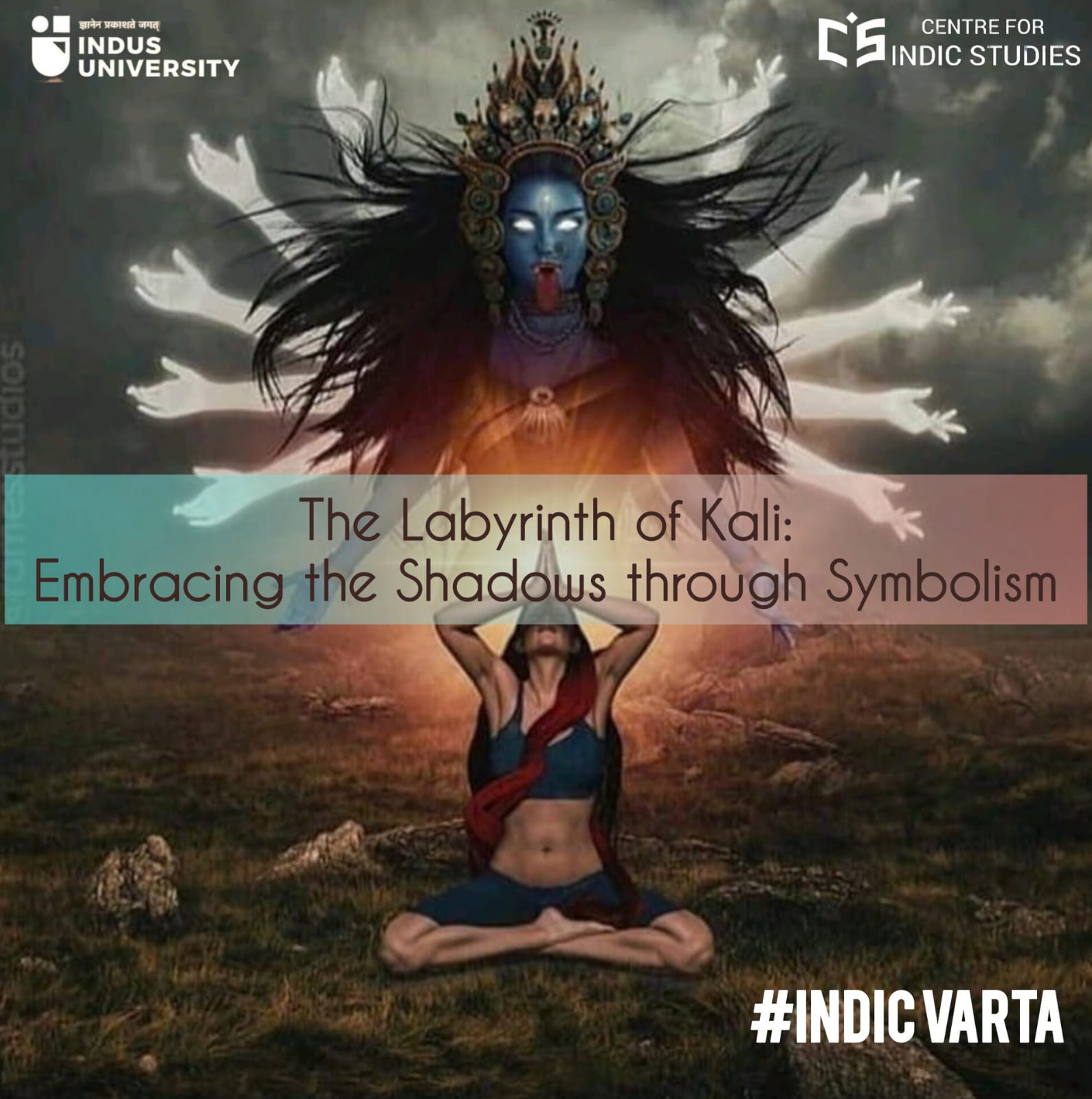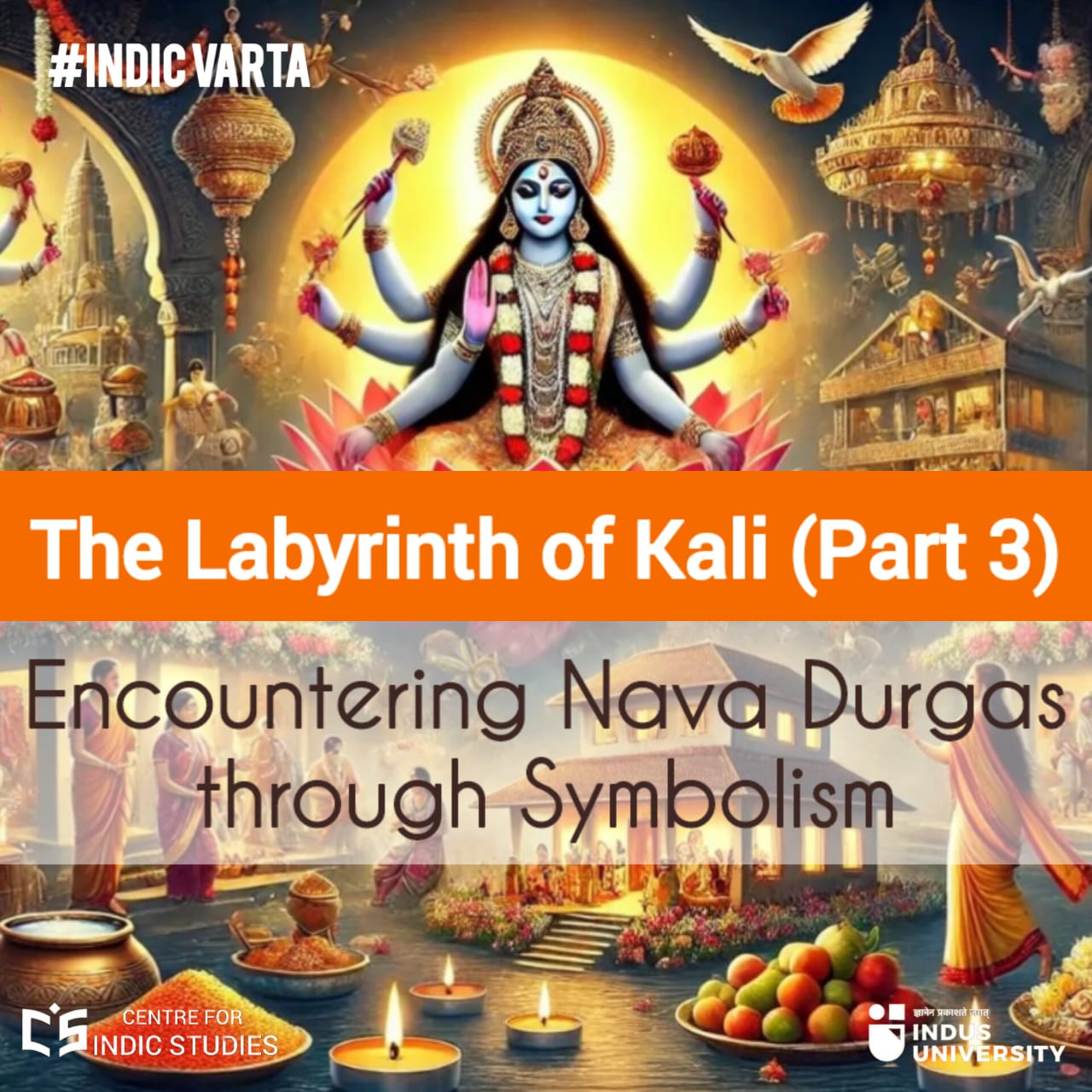- Visitor:22
- Published on:
Is God in Pain? (Part-4)
What sort of thing or entity is God? God is like a son of a barren woman- a total self-contradictory object! He might have His own Dharma or characteristics but they are mutually opposed- a four-angled quadrilateral circle, an extremely hurt but completely painless fellow. Can such a thing exist?

The following content is translated from the lecture given by Sri Arindam Chakrabarti in Bengali. Arindam Chakrabarti is, currently, a visiting professor of philosophy at Ashoka University, India. He is, also, a professor of philosophy at Stony Brook University, where he has been since 2018. Prior to moving to Stony Brook, Chakrabarti taught at the University of Hawaii, where he was the director of the EPOCH Project (Eastern Philosophy of Consciousness and the Humanities). The original lecture was given at the event on the memoery of birth anniversary of Professor. Katyayani Das Battacharya arranged at the Ramakrishna Mission Institute of Culture, Kolkata, 13th July, 2017. Being one of his admirers, the lecture is published in this article format with the intention to spread his voice more for our readers.
…continued from the last part

About 20-25 years ago, Frank Cameron Jackson, an Australian analytic philosopher wrote a paper titled “What Mary Didn’t Know”. From there, Arindam Chakrabarti narrates a symbolic story on a thought experiment. Suppose there is a very sharp intelligent scientist whose name is Mary, specialized in color vision. She has been researching only on this field extensively throughout her life. This made her extremely knowledgeable and expert on the topic of “how human beings visualize colors through their eyes”. There is nothing left in the subject of color vision, that Mary does not know or has yet to learn. But, the problem is that though she had read all the books and researched every theory, from her childhood she has been living in a room where only those necessary machines and computers are just provided to her that are essential for practical assignments and tasks.


And, the twist is that every object and wall of the room only comprises of just a couple of colors- black and white! Mary has never witnessed other colors except those two. She is unaware of what red, blue, green, yellow, orange, violate, etc are. Still, she is well-read and a scholar on color vision.

Let, that woman come out of her room and look at the intense grassy greenery of the field or the scenary of thin streaks of cloud trailing across the azure blue sky above. Now, what will she feel? If she thinks that till now she used to know less about the subject of color vision, then the additional knowledge that she had gained right now – apply that as the “knowledge of sorrow” on God.
Like the doctors who have been treating Professor. Katyayani Das Battacharya’s cancer, if God also knows everything about cancer, but Himself not suffering from cancer- we can definitely now say that His knowledge about cancer is still a little bit less than enough. Only if the knowledge of neuroscience behind cancer is also added to what it feels to suffer from cancer is present inside anyone or God Himself, then only we can claim that the entire knowledge on cancer is achieved and fulfilled. If the sense of suffering is not met, then there is a lack of knowledge still remaining in the knowledge treasure, call it practical, experiential, or any sort of learning. And, as claimed by definition, our omniscient God must not have any deficiency of knowledge. In addition to this, can anyone realize the knowledge of pain without actually suffering?
Moreover, this knowledge is not like the knowledge of understanding errors. The knowledge of errors can still be there in anyone if the knower doesn’t make mistakes. But can the same be applied to the knowledge of pain? One can definitely not realize pain till he himself does not suffer.

Therefore, we can deduce by this logic that the omniscient all-knowing God should have direct first-hand personal knowledge of suffering.
Irrespective of which theistic school of thought you are coming from, is there anything going on in your mind making you reject this calculation? At least, if you are an Advaitavadi, you must not have any issues with this. So, keeping all other ideologies aside, let us consider and precede the journey holding an Advaita Vedantist’s hand, who can easily claim that it is the God who has manifested in every object. So, God is experiencing every possible suffering through his creation. God is everything.
Now, again there is a problem in the view – “God is everything”. In that perspective, suffering cannot be applicable to God. Isn’t it God, who is self-fulfilled? How can He suffer? What is He still lacking inside? What can make Him suffer? What more can give Him satisfaction?
Hence, a theist cannot benefit if he walks on this path of logic.

But, if you are still desperate to win the debate bring the term “daya” or “compassion” in this scenario.

Those who believe in God, never just agree about His existence because He knows everything like an encyclopedia. Google has a gigantic database of information.

Do we worship Google? No, because it does not have any sense of pity.
God has to be merciful. For this, He must have sympathy. Then only, we can accept Him as God.


In every Indian literature on emotion from Natyashastra to Abhinavbharati, there is only one core and highest indication to define daya. That is- to be painful in seeing others’ misery or to have compassion, be empathetic. Do not confuse this with “having the knowledge of others’ suffering”. It simply means nurturing the fellow feeling about others. This is daya. And if during my deadly illness, He Himself does not suffer from the same pain of mine, He can never show actual mercy to me.
➡Point 1: So to be all-knowing and all-merciful, God has to be suffering in real excruciating pain. Not just a poetical or philosophical cry, he must undergo a time of immense agonizing tribulation that is more than hellish torture. Or in the words, He must have Badhanalakshan Bukkha or accepted everything to be pain stored in his heart.
➡Point 2: Now, the Yoga Sutra from where this conclusion is drawn mentions- “Klesha Karma Vipaka Ashayaih Aparamrushtaha Purusha Visheshah Ishwaraha” which also means that God remains untouched by the afflictions of life, actions and the results and impressions produced by these actions. There should not be any trouble and anguish for God.
With these inferences from Points 1 and 2, we have no other way left than to accept God with both the qualities.
So what is God? Leave Yoga Sutra aside. Bring the best definition of God in the history of mankind spoken in the Isha Upanishad. What is the sign of Isha? He is-
✓suddha or pure
✓abrana or without any wound
✓akaya or devoid of anybody
✓apapabiddha or untouched by anything wrong
This justifies Point no. 2 that there should not be any misery for God. But can we deny point no. 1?
So, what sort of thing or entity is God? God is like a son of a barren woman- a total self-contradictory object! He might have His own Dharma or characteristics but they are mutually opposed- a four-angled quadrilateral circle, an extremely hurt but completely painless fellow.

Can such a thing exist? That is why, particularly Yukti Dipika, a commentary on Samkhya philosophy has boldly declared without a doubt that there is NO GOD!

Not just that harsh, but “God does not exist”– this sentence can be mildly explained by humor. Against the missionaries, Raja Rammohan Roy once wrote a short story with dialogues titled “Padri Shishya Samvad”. It was a conversation between a Christian priest and three converted Indians. The three guys came from Brahmin backgrounds and were well taught in Christianity for ten years. Now, the time has come for them to return to their motherland India and they were assigned the mission to convert the entire land to save the natives from hell. How much efficient they have become till now and what capacity they have gathered in their intellect for their allocated task, to evaluate that their senior called them before him for a test.


He asked the first student, “Tell me son, how many Gods are there?”.
He replied, “Father, there are three gods- God the Father, God the Son and God the Holy Spirit”.
The mentor replied with irritation, “No, no! You have learned nothing to date. We are putting all our hardships into preaching One God. You are dismissed for the mission”.
When the second one was asked the same question he thoughtfully answered, “Well, there are two Gods. God the Father and God the Son are the same since Christ has said that ‘I and my Father are one’. So, both of them become one and only the Holy Spirit is left in the other hand”.
The annoyed mentor irked, “The bull shit of polytheism is so much infused in your brains, that you have lost the minimum intellect to understand our truth. Incorrigible! Rejected!”.
Turning to the third one he told, “Hope you will not disappoint me. At least one of you must answer properly after so many years of our hard work. And, you have been brilliant of all. Answer me how many gods are there”.
The third student responded, “I think that there is no God”!
Getting furious with the answer and wondering at the same time, the priest madly said, “What? You were here with us for the past ten years learning Christianity. How can you reply such foolishly, I don’t understand”.

The student replied, “Yes. Let me calculate in front of you. Look, God the Father and God the Son are one. Now, you taught that the Holy Spirit came in the form of the Son and died on the cross”.
However, Samkhya’s “there is no God” is not that silly and immature. God has adversative characters as we have seen before. Were the Nyayayiks and followers of Yoga Sutra not aware of it? Yes, they knew this very well.
So, ultimately how will those who still believe in God come forward?
Here, they can, at last, argue by stating that two things have been inexplicable or untold till now. One is Maya and the other one is Brahman, the infinite. And, to define Brahma within Brahma, there is no other way to identify it other than to provide contradictory adjectives.
Brahman! For now, keep the idea of Brahman aside. Otherwise, to interpret its theory we would have to sit for another long session like this. Let us have a practical look at the aspect.

We all have heard about Friedrich Wilhelm Nietzsche, the flag bearer of atheism on western philosophical grounds and who openly claimed that “God is dead”. There is a relationship between suffering and him relevant to our current topic. Not from any of his books or theory, let us listen to it from his personal life. On 2nd February 1889, in Turin, a city in Italy, sitting in his room Nietzsche noticed that some crowd has gathered outside. When he moved forward to inspect the matter, he found that a disobedient horse is brutally and constantly whipped by his keeper to make it move. It can be noted that the analogy of the whip is significant. Till now, we have constantly condemned Dukkha or sorrow as an evil aspect of life. In Samkhya, it is asked how to escape sorrow but at the same time, it is also equated with Rajas (रजस्). And without the lashing of dukkha or whip at behind, we cannot give rise to motion in our life. The reason we move forward and our life is going on is because of this scourge. The day when this Rajas would go away from our life, we would lose our inertia and become stationary. To any extent of Satta (सत्) guna you might nurture, but from just Satta only, one cannot serve society. We need Rajas. And, Rajas means conflict. Now, you can argue that then how come Swami Vivekananda, being an embodiment of Satta guna himself had shown us such immense karmayoga throughout his life, wide awake serving the society till his last breath without ceasing. And it is not that he was a dukkhavilasi (दुक्खाबिलासी) or belonged to that group of people who love and wish to intake sorrow intentionally. Also, he was not a bedanavilasi (वेदनाबिलासी) or one who likes to get hurt. He was none of these. Rather, he used to cry out in aggravation with immense pain in his soul. But still, he was so much active and successful in his works, because of this pain- not his own personal sorrow but others’ suffering. Struggle and misery of the other person used to move him.

Nietzsche saw that the horse is getting tortured. Don’t know why and what happened to him, he rushed towards the animal and embraced its body with his two hands. It was much like what we have seen in Chipko Movement in India. “If you have to hit, beat me up”, urged downhearted Nietzsche with eyes full of tears.

Finally, he turned clinically insane and fell. His landlady took him to his room and lying down on the bed, for the next 48 hours he remained silent. Remember what was said at the starting phase of the session?

“If every word is lost in pain then in what words can we express our feelings?”. Likewise, all his words got lost in pain. Same as Jada Bharata, the king from Hindu Purana, he was alive for next ten years but in complete psychological misbalance. No more words were written down by him. Finally, he expired. From this incident of going mad just for being sympathetic towards an unknown animal- we get an indication.

We can surmise that he might be right. God is certainly dead. He doesn’t exist, like what Samkhya always tries to say. Alara Kalama, a hermit from Samkhya school taught Siddhartha Gautama some spiritual lessons. This is to inform that Buddha had an influence on ancient Samkhya darshana. We also know, with a smile on her face, holding an Ashoka tree, Buddha’s mother Mayadevi gave birth to him. She did not care about or face the pain of delivery. During that golden age of Buddhism, Shantideva an upacharya or senior master of Nalanda University has written some points that are just translated below.

◙I don’t want Nirvana or salvation
◙Till the never-ending sky is there, till all the living creatures are playing on this planet, till the colossal earth is present, to end the sufferings of every organism alive, may I be taking birth and returning here again and again.
Saying this, he ends with a prayer.
◙Those who are shivering in cold, if they can have a taste of minimal warmth, I am ready to make penance for thousands of years for them.
◙Those who are struggling in heat, so that they can touch the minimum coldness to get relief at least, for them I want to continue my tapasya for thousands of years.

[And taking a strong oath here in Bodhicharyavatara, Shantidev’s classic guide to the Mahayana path, the writer declares]

◙In exchange for all my penance, may every pregnant lady in the coming age deliver babies painlessly like Mayadevi.
So, for all our personal sorrow and collective suffering in society, leaving aside whether we believe in God or not, knowing and acknowledging that one God is in pain, the para or the one who is struggling in front of us, realizing him as the Parameswar, we must confess that- “This is the suffering God in front of me”.
“Where are you looking for God – when he is in front of you in every living being, in many different forms? Those who serve mankind (and any other living being) are serving God”
–Swami Vivekananda


Not only, Ramana Maharashi’s hand decaying in cancer and because he is a holy Godly person, not only the sacred Kathamrita coming out of the throat of Sri Ramakrishna getting blocked by cancer, but also in every multifaceted personality before me, confused howling Gods are daily moving around. Accepting every individual sorrow of them to be much more than any of my discomforts… whether that may be demise of all my ten children, break up with my most beloved one or every extreme mishap that can happen to me… and making this my truth and Gnana– if we can at least come forward with a minimum attempt to diminish them as much as we can, then might be in other words, our dukkha Mukti or liberation from sorrow be possible!
Namaste!
Center for Indic Studies is now on Telegram. For regular updates on Indic Varta, Indic Talks and Indic Courses at CIS, please subscribe to our telegram channel !
Sources of main lecture:
- https://www.youtube.com/watch?v=XhXjXJjouWg
- https://www.youtube.com/watch?v=wjBxjJJ0A30
- 11 min read
- 0
- 0










